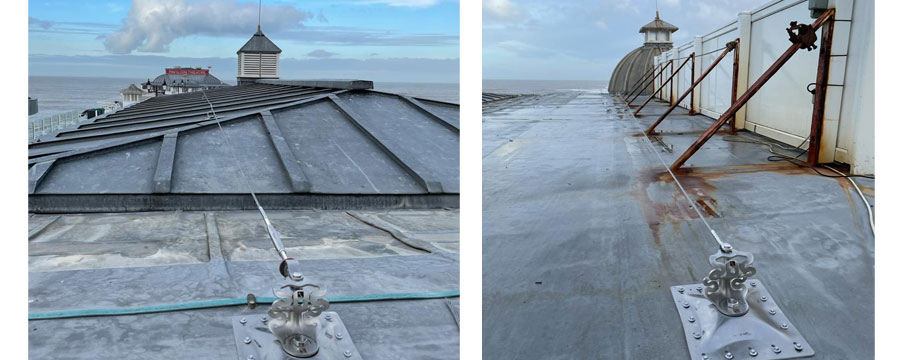The preference from the ‘Health and Safety Executive’ is that access to high level areas are either restricted or prevented with plant placed at ground level. However, when access is required for complying with roof warrantees and also the clearing of debris with other maintenance issues, this is often impossible to achieve.
To find out the solution, Housing Association Magazine hears from SAFETYWORKS & SOLUTIONS MD Marco Norman, the UK’s leading ‘Safety at Height ’ experts...
Safety should always be paramount. Arguably, landlords and facilities management companies have an obligation to ensure that these areas can be accessed safely with measures in place to prevent falls from open edges and also glazing and roof lights that may be deemed as fragile once safe access is provided.
Readers of ‘Housing Association Magazine’ will be familiar with a combination of street properties and blocks with a variety of flat and pitched roofs. For the purposes of this article, we will be dealing specifically with access to blocks of flats; but the same responsibility lies upon street properties where maintenance contractors should be used and correct temporary measures are adopted at all times, such as scaffold or MEWPS with mobile ladders that are secured as the last option for short duration works only.

SafetyLinks system as Cromer Pier
Access up?
Generally fixed caged access ladders or stairs to EN 14122 will suffice. These can be easily adapted for access through hatches and doors. Security shields can be added to keep access to the hatches safe. When ladders pass through hatches, telescopic grab handles are ideal to aid access in and out; barriers with self closing gates should be considered to prevent falls through the hatch!
Where fixed ladders cannot be fitted, mobile ladders with safety devices stored in security boxes adjacent to the access is a great option.
Lifelines… or barriers?
The hierarchy of controls calls for barriers providing collective protecting above all other measures. Guardrails come in the form of both freestanding handrails and fixed handrail the standard recently adopted is EN 13374 Class A; this meets half of the load called for by the old British standard!
When choosing a system consider where it is going if it is to this standard as the loads are very light .34 kN.
The standard states that it should accept the weight of a person leaning against it. The old standard HSE/SR 15 Sept 1988 is still adopted by many maintaining the .74 kN load & will also meet most wind loads and offering much reassurance.
On Cromer Pier entrance, an iconic building, a system was required that was discreet and did away with the huge cost of weathering the many anchorages need to fit the system.
SafetyLinks system is low level and discreet, the posts when fixed to zinc and lead roofs is self sealing saving on these additional costs.
Visit the Safetyworks and Solutions website
- Log in to post comments















